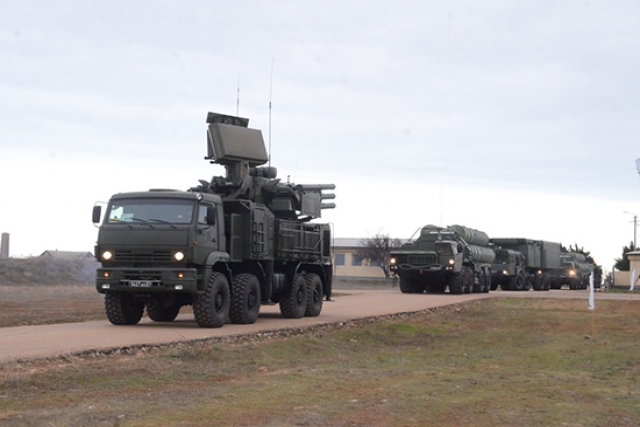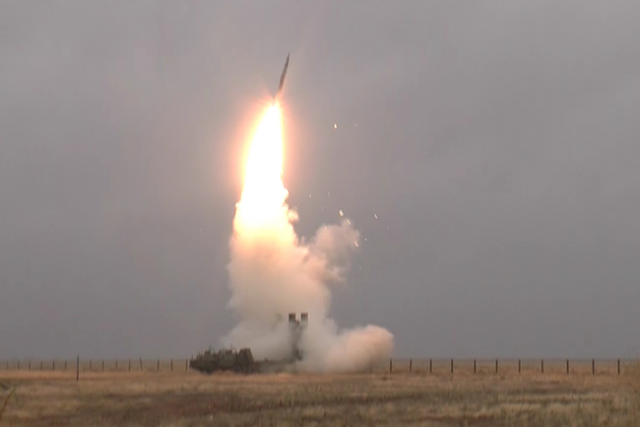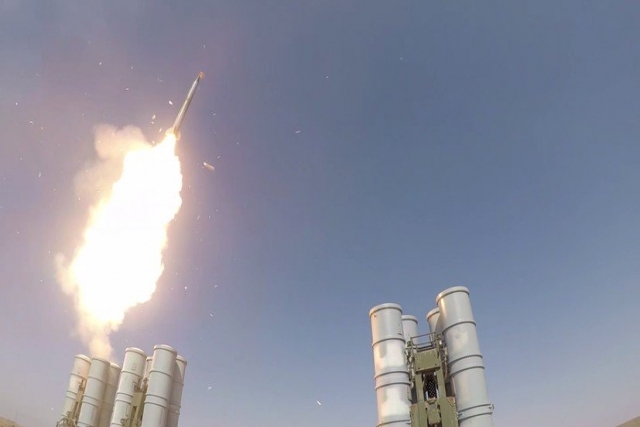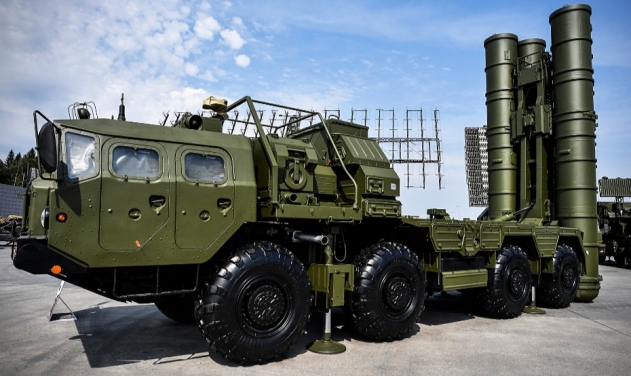New Missile Tested for Russia's S-500 Air Defense System

An all-new missile was successfully tested from Russia’s S-500 air defense system (ADS), the successor to the highly-successful-and-controversial S-400 ADS.
Russian publication Izvestia reported of the successful missile test quoting official source, but did not describe the characteristics of the missile. From earlier reports, it is said to able to hit targets flying at supersonic speed and a range that gets close to near-earth orbit.
Trials were held at Sary-Shagan training ground in Kazakhstan. The missile precisely hit its target, the report said.
The missile is designed to destroy hypersonic and ballistic targets. It has a sophisticated guidance system and will use the impact principle to destroy the warheads of ballistic missiles.
In late May 2021, Russian Preseident Vladimir Putin said that S-500 trials will be completed soon. "Over 70% of surface-to-air missile regiments in the Aerospace Force have been rearmed with advanced S-400 systems. The S-500 system whose trials are successfully nearing completion is next to be delivered to the troops," Putin said.
Russia also recently tested its S-500 with interceptors capable of eliminating hypersonic targets.
The system’s “first samples” will enter service this year while its serial delivery is scheduled for 2025, according to Sergei Chemezov, head of Russian state defense manufacturer, Rostec.
“The S-500 Prometheus mobile ADS is being created to destroy rockets and spacecraft in near-earth orbits. It can eliminate targets flying in hypersound,” Lieutenant General Aytech Bizhev, ex-deputy head of the Air Force for the Commonwealth of Independent States air defense system, was quoted as saying by an older Izvestia report.
The mobile system can be transported by ground or air around the country and deployed depending on the threat, Bizhev added.
The S-500 utilizes a combination of missiles to intercept a variety of aerial targets. It employs the 40N6, which is also installed in the S-400, to neutralize “aerodynamic targets.” For ballistic missiles, the system uses the 77N6 with “conventional and nuclear warheads” to destroy targets in the “transatmospheric sector and in near space,” the outlet wrote.
A Gazeta.Ru report last month said that the Russian Army received the Yenisei radar station, which is likely to be integrated with the S-500. The jam-proof Yenisei is capable of uninterrupted operation for a longer period of time than other air defense radar systems. The system’s fully-automatic function excludes the possibility of human error.
It is an active-passive radar, which allows it to conduct “reconnaissance and detect air objects and issue target designations to air defense fire weapons even without broadcasting.”
Another key feature of Yenisei is its ability to scan a “sector,” unlike most of the other radars that scan in circles, the outlet wrote, referring to the S-400’s 96L6 all-altitude detector radar station, which is incapable of sector scanning.













